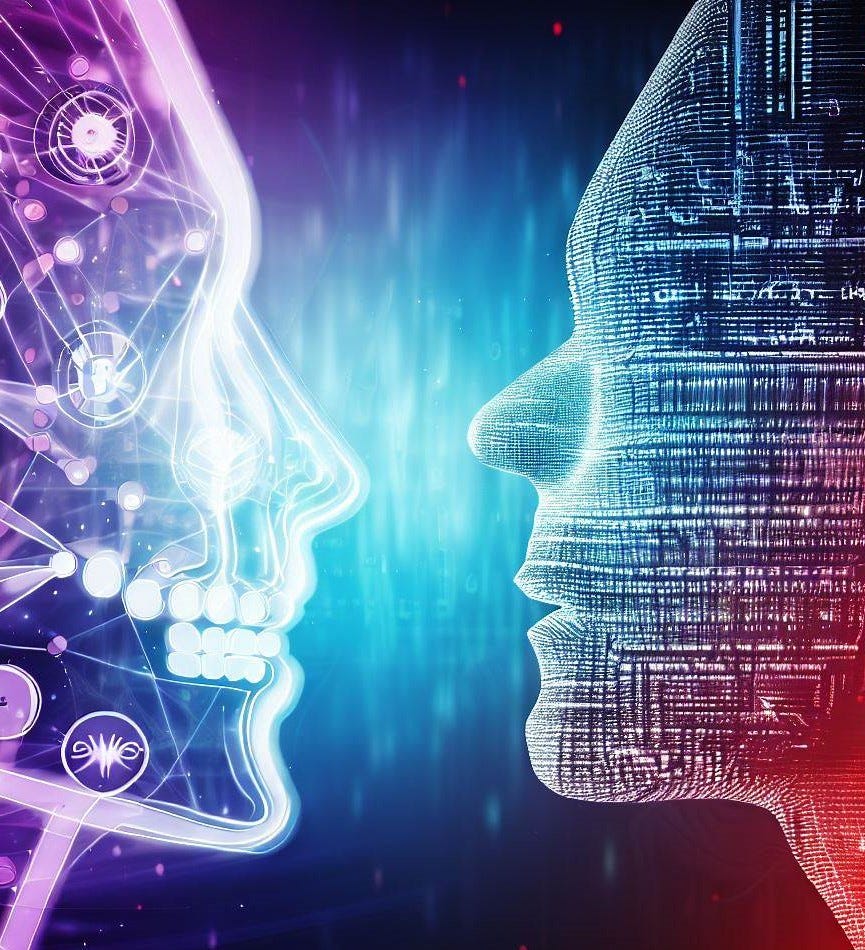The New Alphabet: Large Language Models and the Democratization of Ideas
As we stand at the edge of a transformation in communication, we are navigating the challenges and opportunities of a phenomenon we'll refer to as the "Samsung Effect" — the inadvertent sharing of proprietary information with an AI, which then becomes part of the AI's public knowledge base. This incident is a stark reminder of the potential pitfalls in our interaction with large language models (LLMs) like ChatGPT.
Yet, there's an intriguing prospect that shines through: the creation of a new form of vocabulary. This "new alphabet" goes beyond mere words; it involves the synthesis of complex ideas, delivered through the perfect concoction of words and sentences. This development has the potential to democratize communication on an unprecedented scale. But it also carries risks that we must acknowledge and address.
The New Alphabet and the Evolution of Communication
Historically, every significant innovation in communication — from the invention of writing to the internet — has revolutionized the way we share and comprehend knowledge. Today, as we navigate the frontier of LLMs, we face similar fears and hopes as we did with past communication technologies.
In the Samsung incident, employees inadvertently leaked sensitive information — including proprietary source code and confidential meeting records — to ChatGPT, a large language model, during their work-related tasks. This sensitive data then became part of the AI's public knowledge base. The issue here is twofold: first, the proprietary information could potentially be accessed and misused by competitors or malicious entities, damaging Samsung's competitive advantage. Secondly, the incident represents a significant breach of trust and potential legal issues for Samsung, as confidential and proprietary information should be strictly controlled and safeguarded.
This serves as a vivid reminder of the need for clear guidelines and responsible usage when interacting with these powerful tools. But it also points to an exciting development: the creation of a new alphabet, a dynamic blend of "ideal text blocks" — perfectly crafted words and sentences embodying complex concepts and ideas.
Much like the original alphabet democratized the ability to communicate through writing, LLMs could do the same for the expression of complex ideas. This time, however, the transformation could occur in years, or even months, rather than centuries.
Addressing these risks calls for both individual responsibility and organizational safeguards. Users should be educated about the potential pitfalls of sharing sensitive information with LLMs. Organizations, on the other hand, should implement clear policies and technological measures to prevent inadvertent data leaks. For instance, limiting the amount of data that can be shared with an AI, as Samsung did in the wake of the incident, could be one such preventative measure.
That said, the genie is out of the bottle.
The Power of Remix: From Hip Hop to LLMs
Consider the world of music, specifically Hip Hop. Artists like Dr. Dre have created profound art by rearranging pieces of existing music, adding original lyrics, and transforming samples into something entirely new. LLMs function in a similar fashion, rearranging, synthesizing, and creating from a vast array of existing information.
This approach is not just derivative; it's generative, creating new outputs from existing inputs. It's a process that's exhilarating, addictive, and profoundly creative.
In this light, LLMs are akin to a camera, a tool that captures and reframes reality. Just as the camera didn't diminish art but rather expanded its possibilities, LLMs could do the same for language and communication. They don't detract from our cognitive capabilities but enhance them, much like writing did for our ancestors.
Derivative or Creative? Language and Art in the Age of AI
Language itself is derivative. We don't usually invent new words; we arrange existing ones to convey our thoughts and emotions. This is precisely what LLMs do, but on a larger scale. They arrange "ideal text blocks" to articulate complex concepts, creating new combinations of ideas, much like a Hip Hop artist creates a new track from existing samples.
To object that LLMs are merely derivative is to miss the point. So is language. So is much of art. It's the novel arrangement, the unique synthesis, that counts. And this is where LLMs shine.
As we harness the power of this new alphabet, we must bear in mind the lessons of the past. Every significant leap in communication technology has brought both risks and opportunities. By navigating these responsibly, we can ensure that LLMs contribute positively to the evolution of human communication, just as writing, printing, and broadcasting have done before.
Reflecting on my own personal experience, I can attest to the transformative impact of this 'new alphabet'. A few months ago, my goal was to simply reduce the time spent on repetitive tasks. Instead, I found a new way to express my creative ideas more freely and effectively than ever before. The ease of communication, the ability to rapidly manipulate and share ideas, has been liberating. Having these 'ideal text blocks' at the ready is a game changer. It's like being the only human being with a GPS, in a world where everyone else is still using paper maps.
What can we do?
I’m doing what I think is the most important thing: having meaningful, nuanced conversations with smart people. That’s you! Thank you for being a part of this incredibly important conversation. If you’d like to respond to any of my thoughts here, or just have a deeper conversation, you can just respond to this email directly and I’ll get it, or you can leave comments here.




